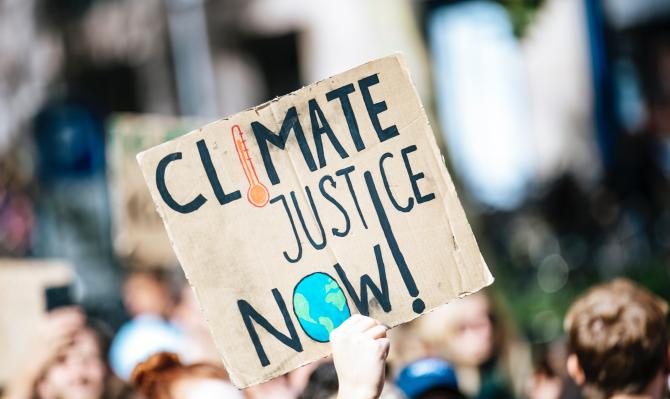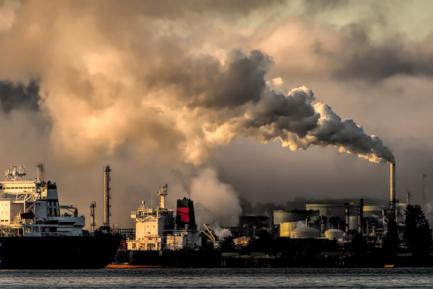The energy mix of the future
Energy represents a very significant component of economic activity (accounting for around 9% of global GDP according to our calculations) and its price fluctuations have an undeniable impact on the economy and the financial markets. In addition, the importance of energy goes beyond the economic sphere, as it shapes global geopolitical relations. Besides geopolitics, energy and its externalities also lie at the heart of the environmental issue. The economic historian Carlo M. Cipolla1 defined the history of the world’s population as the history of energy.
The expected change in global energy consumption over the next decade is determined by four key and interrelated factors. The first is the environmental imperative, focused on climate change. From this factor, the following two emanate: measures to achieve a lower reliance on coal in the economy in order to reduce carbon dioxide emissions (decarbonisation), and improvements in the electrical network (electrification). It should be noted that those responsible for economic policy must tread very carefully to balance environmental pollution controls with economies’ legitimate aspirations for economic growth. This is a common theme in debates on the desirability of a more active green taxation system that includes taxes on carbon emissions, something that has already been demanded by a select group of 27 Nobel Prize winners and the last four presidents of the Fed.2 This transition can only be achieved with the fourth factor, reducing energy intensity. Energy intensity is the energy consumed per unit of GDP, and reducing it relies on the current environmental policy targets being met.
Taking these four factors into account and based on forecasts by the US Energy Information Administration (EIA), it is estimated that between 2018 and 2030, global energy consumption will increase by around 15%, and its economic cost by a little more, around 18%. This higher growth in costs is mostly driven by the transition costs associated with shifting towards other energy sources that are cleaner, but also more expensive. Even so, these increases are likely to be lower than the expected growth in global GDP, which will stand at around 45%. This is thanks to the fact that global energy intensity could fall significantly, by around 20%. By country (see first chart), China, India and the rest of the Emerging East Asia bloc will account for four fifths of the expected increase in global energy consumption between 2018 and 2030 (54.0% corresponding to China, and 12.5% to India). The combined increase of Western Europe, the US and Japan, meanwhile, will represent barely 1.4% of the expected total increase.
But how will the energy mix evolve? According to our scenario, as we can glimpse in the second chart, the energy mix should evolve towards a reduction in the role of oil and coal, from 35% to 32% and from 27% to 25% of the total energy consumption, respectively. On the other hand, renewables could acquire greater importance (going from 13% of the total to 16%), as could natural gas (going from 21% to 22%) and nuclear energy (from 4.6% to 5%). However, achieving the dual objective of strong economic growth while also controlling pollution seems less certain, since emissions would not fall but rather would see an 11.0% rise. That said, such an increase would still represent an improvement on the 13.0% rise registered in 2010-2018, a period with lower global GDP growth (30.4%).
If we focus on the key factors we highlighted above, the environmental imperative is inescapable. The situation is not particularly flattering, because in 2018, 34,854 million metric tonnes of carbon dioxide were released into the atmosphere, 13% more than in 2010, when the objective is to reduce emissions. China has contributed 61% to this increase, because although it is making notable progress in controlling pollution, the very dynamics of its high economic growth and the weight of its heavy industry have played against it. Other emerging economies, especially India, have not made any progress, which will make it difficult to achieve the targets that have been set. This need to reconcile emerging economies’ legitimate desire for growth with controlling environmental pollution is what will define the global economy over the next decade.
The second factor is decarbonisation, the focus of attention for the environmental imperative where the critical factor is coal: coal represented 26.9% of global energy consumption in 2018 but was responsible for 43.3% of global emissions. Between 2010 and 2018, there has been no reduction in the weight of this energy source. Since it is cheap, it is the primary energy source for China and India, which are the fastest-growing of all large economies (China and India contributed 40.0% of the increase in global energy consumption between 2010 and 2018). The good news is that the shift towards decarbonisation has already begun in China, where coal has gone from representing 68.1% of the total energy consumption in 2010 to 60.2% in 2018. India, in contrast, is not on the same wavelength: coal represented 48.5% of its energy consumption in 2018, above the 46.8% of 2010. What does the future hold? If the Chinese economy maintains the current trend, we will begin to see a significant reduction in the use of coal over the next decade: its weight in global energy consumption is expected to decline by 2.1 pps between now and 2030, largely thanks to improvements in China.
The third key factor, electrification, will be driven by the need to reduce pollution in large cities. Electrification is the best way to achieve this, because it allows the generation of energy from fossil fuels (the main cause of emissions) to be replaced by clean energy sources such as wind or solar. Thus, over the next few decades, a gradual process of electrification is expected, which will require significant investments and will extend to industries such as transportation, buildings and manufacturing. The importance of this phenomenon can be seen when we calculate the electricity fee,the percentage of total energy consumption that corresponds to energy loss resulting from converting primary energy sources into electricity. According to data from the EIA, this loss of energy has remained stable between 2010 and 2018 at slightly above 25%,3 but it is expected to rise to 26.9% by 2030 with the increase in electrification. In any case, electrification will be a phenomenon with far-reaching implications that will allow for a more sustainable geographical allocation of power generation.
The fourth factor is the reduction of energy intensity, which is essential in order to balance economic growth with the control of pollution. Energy intensity depends on two factors linked to technology: energy efficiency and changes in the composition of GDP. Energy efficiency means consuming less while doing the same thing (for example, reducing the consumption of a car per kilometre travelled). Changes in the composition of GDP, meanwhile, can boost activities that consume less energy. This is achieved if sectorial adjustments are made in the economy, such as reducing the weight of heavy industry in favour of information technologies.
In this regard, the future path of energy intensity at the global level will critically depend on what happens in China. China already plays a key role if we consider that, between 2010 and 2018, it has contributed 28.5% and 60.9% to the global increase in energy consumption and emissions, respectively. As we can see in the third chart, the Asian giant will continue to be a key player, given that it is expected to contribute 30.0% of the energy savings between 2018 and 2030, greater than the sum of the US and Western Europe (16.7% and 7.4%, respectively). It should be noted that China plans to achieve its energy savings primarily through a significant reduction in energy intensity of around 20% (greater than the 17.4% corresponding to 2010-2018). It intends to achieve this through a process of structural transformation as it shifts towards an economic model with a greater weight of the tertiary sector.4 On the contrary, Western Europe is expected to make a smaller contribution, as it is starting from a relatively more efficient position: in 2018, the amount of energy that Europe spent to produce each euro of its GDP was less than that spent by the US and China (31.6% and 40.9% less, respectively).
In short, the global economy is evolving towards a more sustainability energy mix, which seeks to combine buoyant economic growth with greater control over pollution. Nevertheless, all the indicators suggest that the progress we will see over the next few years will be limited, since, although global GDP is expected to grow well above energy consumption, carbon emissions will continue to rise significantly and the improvement compared to the last decade will be modest. All in all, energy will be a very hot topic over the next decade (and beyond) and the pending challenges will continue to be substantial.
Jordi Singla
1. Carlo M. Cipolla (1962). «The Economic History of World Population». Pelican Books.
2. See the 2019 article «Economist’s Statement on Carbon Dividends» at https://www.econstatement.org/.
3. Which is less than the weight of industry, at 40.4%, but higher than that of transport, trade and residential use (18.9%, 5.3% and 9.4%, respectively).
4. The EIA foresees a faster change of model and predicts a greater reduction in energy intensity (34.7%).






